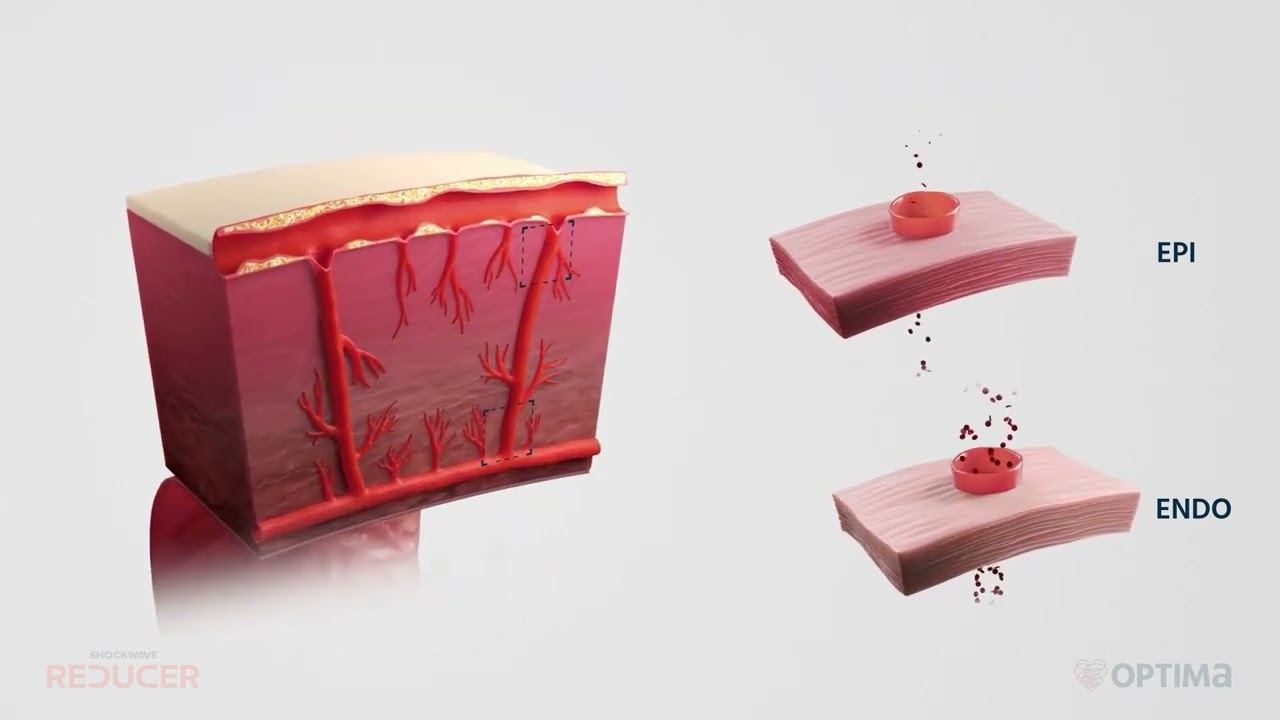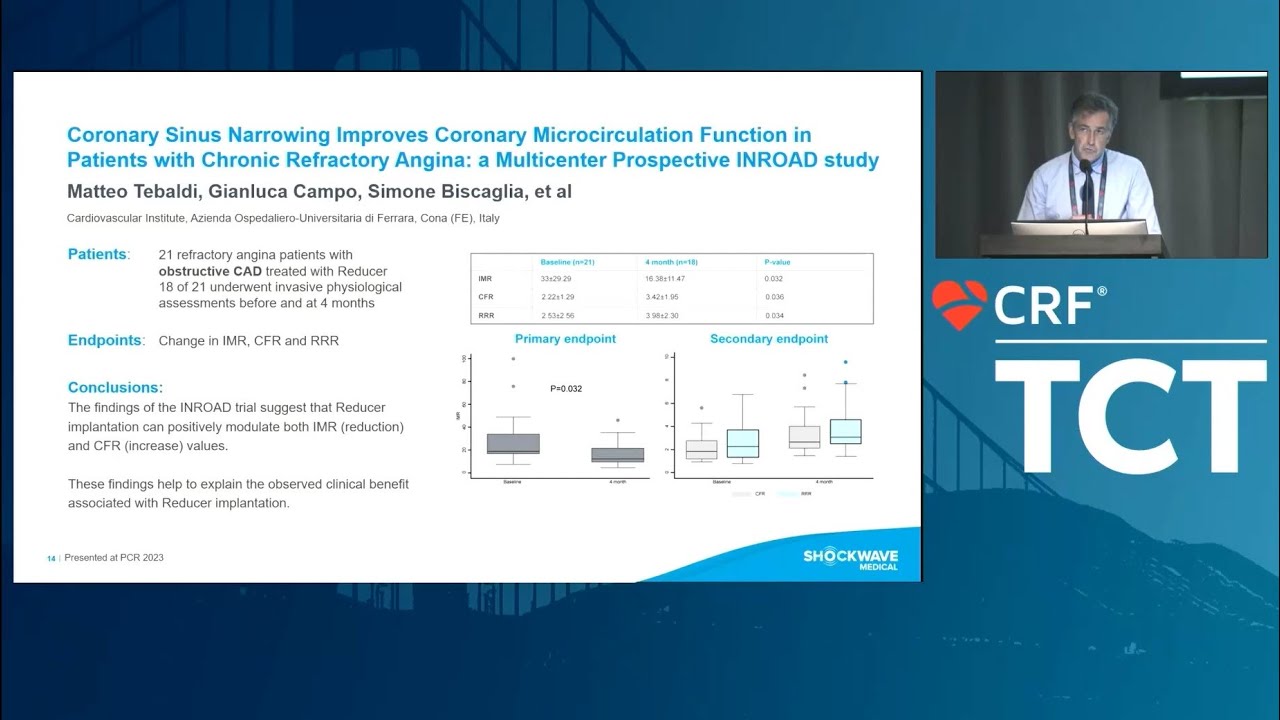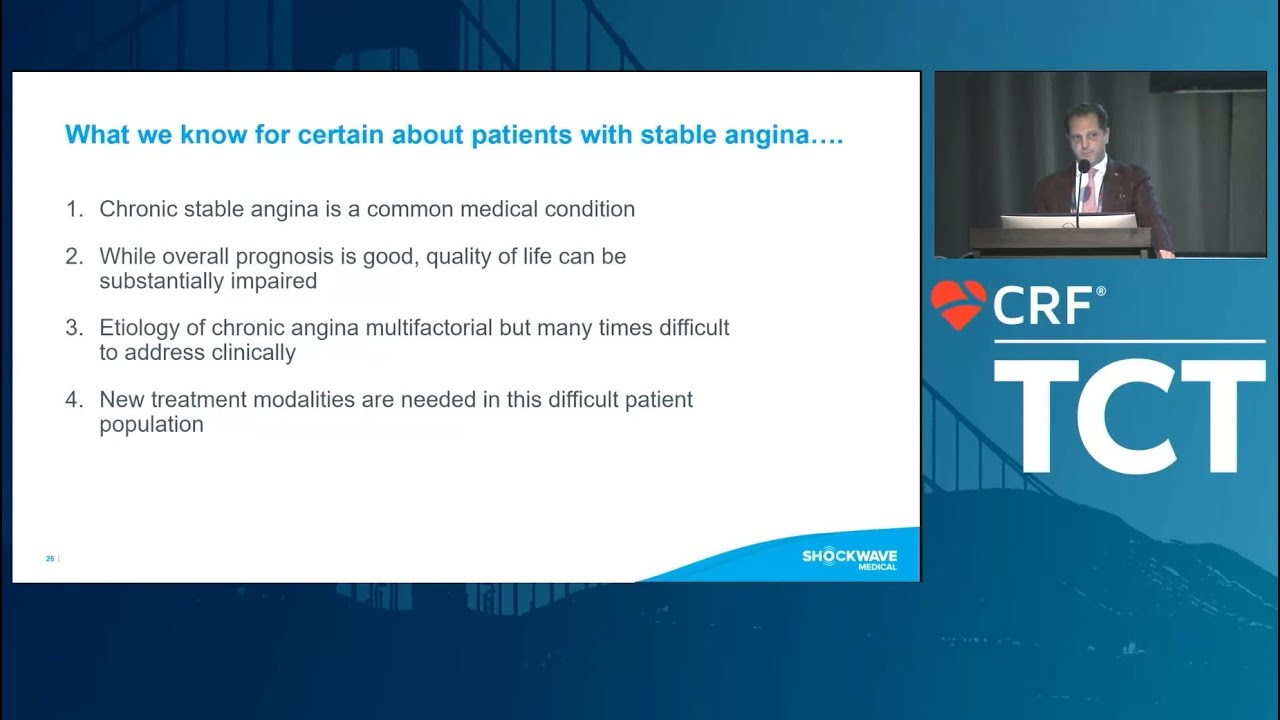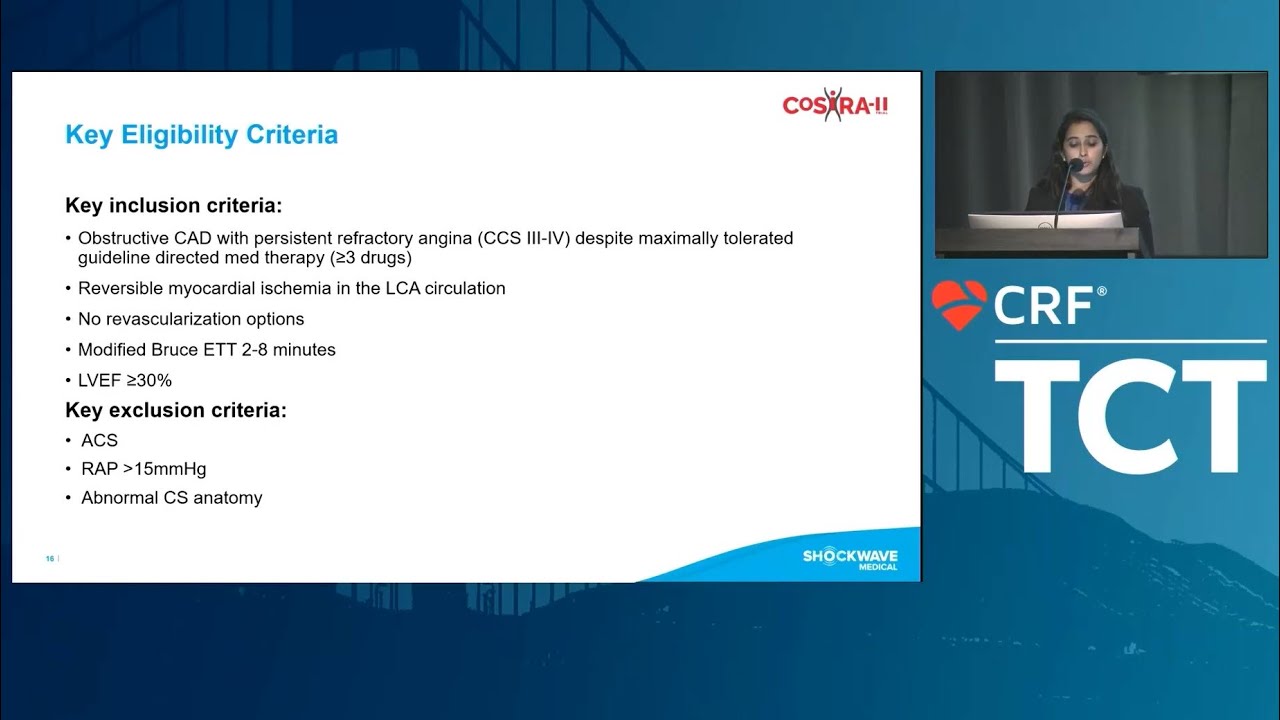Verengung des Koronarvenensinus bei refraktärer Angina pectoris
Schmerzlinderung. Hoffnung wiederherstellen. Millionen von Patienten mit koronarer Herzkrankheit (KHK) leiden trotz optimaler medikamentöser Therapie unter refraktärer Angina pectoris. Der Shockwave Reducer ist darauf ausgelegt, die Symptome der refraktären Angina durch eine permanente, kontrollierte Verengung des Koronarvenensinus zu verbessern.*
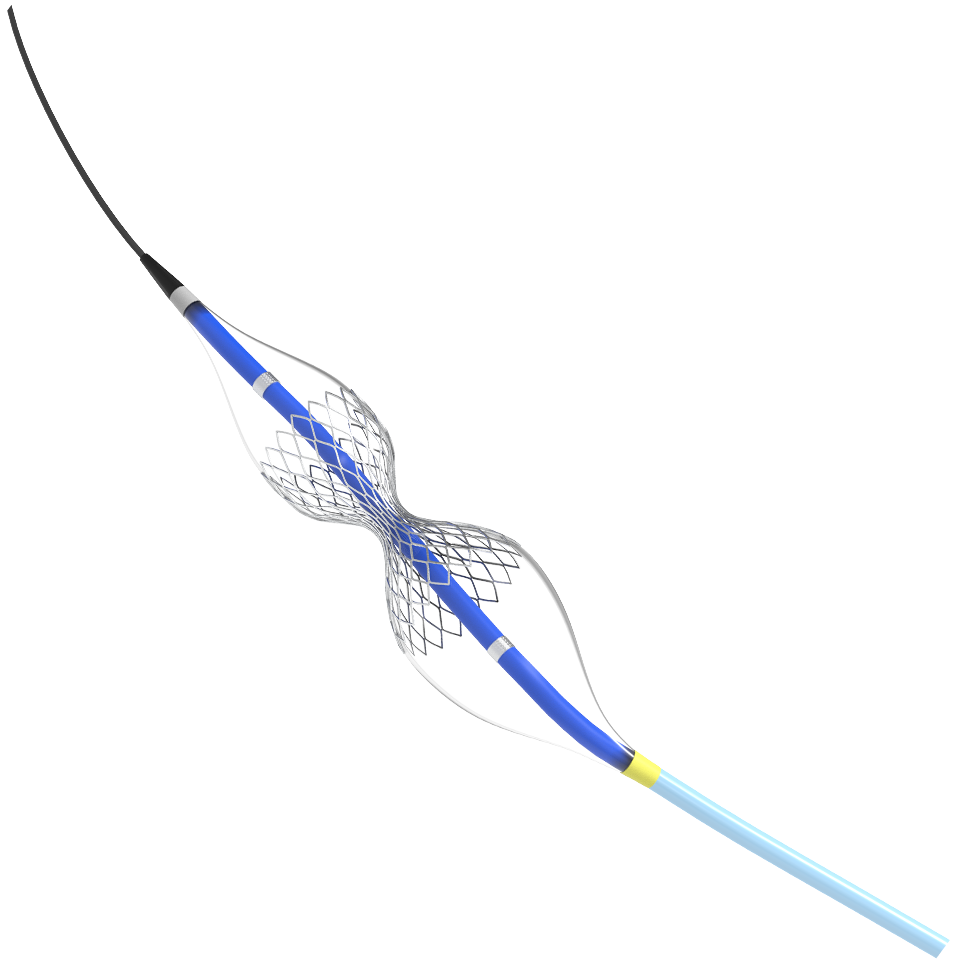

Verbesserung der Behandlungsergebnisse: Perkutane Behandlungsoption für refraktäre Angina pectoris
Angina pectoris ist in der Regel ein Symptom der myokardialen Ischämie (Mangel an Blutfluss zum Herzmuskel) und äußert sich oftmals als Druck- oder Engegefühl in der Brust und/oder Schmerzen in den Schultern, Armen, im Nacken, Kiefer oder Rücken. Viele Patienten mit Angina pectoris leiden unter Symptomen, die schwerwiegend, langanhaltend und durch herkömmliche medizinische Therapien nicht kontrollierbar sind. Diese schwerwiegende Erkrankung wird als refraktäre Angina pectoris bezeichnet.
- Schmerzen der Angina pectoris sind oft ein Symptom der KHK, wenn Plaqueansammlungen in den Arterien auftreten, was das Herz dazu zwingt, stärker zu arbeiten
- Viele Patienten können Linderung ihrer Schmerzen der Angina pectoris durch Revaskularisation mittels koronarer Intervention oder Bypassoperation erfahren. Dennoch leiden 25–40 % selbst nach erfolgreicher Revaskularisation weiterhin unter Angina.1, 2
- Angina bei nicht obstruktiven koronaren Arterien (ANOCA) wird zunehmend anerkannt und könnte bis zu einem Drittel der Patienten betreffen, die sich einer invasiven Koronarangiographie aufgrund eines Verdachts auf KHK unterziehen.3, 4 Diese Patienten haben keine Plaqueansammlungen als Ursache für ihre Angina. Derzeit stehen nur begrenzte Behandlungsmöglichkeiten zur Verfügung.
Wachsende klinische Evidenz: Studienergebnisse
Accordion Section
REDUCER-I 12-month results demonstrated the safety and efficacy of the Reducer in improving angina severity and quality of life in patients suffering from refractory angina.5 Additionally, the outcomes showed a reduction in emergency department visits after Reducer implantation as well as clinically significant increase in the 6 Minute Walk Test distance. The results of the 400 patients enrolled at 25 centres and followed up to three years further augmented the findings from the initial COSIRA trial.6
- 71% of patients improved one or more CCS angina classes at 12 months†
- 26% of patients improved two or more CSS angina classes at 12 months†
Die REDUCER-I-Subanalyse von Patienten mit nicht-obstruktiver KHK*, die einen Reducer erhielten, zeigte nach 12 Monaten eine statistisch signifikante Verbesserung der Lebensqualität (QoL) und eine Verbesserung der CCS-Klasse.
Die nicht-obstruktive KHK ist definiert als Stenose von weniger als 70 %in allen großen epikardialen Koronararterien, nach visueller Schätzung.
- Sowohl bei der obstruktiven KHK (p<0,0001) als auch bei der nicht-obstruktiven KHK (p<0,0002) waren nach 12 Monaten signifikante Verbesserungen im mittleren SAQ Summary Score zu verzeichnen
- Sowohl die obstruktive KHK- als auch die nicht-obstruktive KHK-Patientengruppen zeigten nach 12 Monaten eine verbesserte CCS-Klasse ohne, dass zwischen den Gruppen signifikante Unterschiede (p=0,1178) auftraten
†Gepaarte Analyse für Patienten mit Baseline- und 12-Monats- CCS-Klassifikation.
*KHK = koronare Herzkrankheit
Results of the independent ORBITA-COSMIC trial show Shockwave Reducer lessens angina frequency and improves heart disease related quality of life while improving subendocardial perfusion.7 51 patients were randomized at six centres in the UK. Shockwave Reducer decreased the number of daily angina episodes compared to placebo at six months.
- The results showed evidence of benefit on angina frequency reported using the smartphone ORBITA-app in the coronary sinus reducer (CSR) group compared to the placebo group
- Heart disease-related quality of life measured by MacNew Heart Disease Health-Related Quality of Life scores improved in the CSR group compared with the placebo group
- While the primary imaging endpoint showed no improvement in transmural myocardial perfusion, it did show improvement in subendocardial perfusion, supporting the theorized mechanism of action of the Shockwave Reducer
Beginning in 2010, the Reducer team and clinicians worldwide began studying the safety and effectiveness of the Shockwave Reducer device. 104 patients with Canadian Cardiovascular Society (CCS) class III or IV angina and myocardial ischemia who were not candidates for revascularization were enrolled. One randomized group received the device (treatment group) while another received a sham procedure (control group). COSIRA** demonstrated patients receiving the Shockwave Reducer device achieved a statistically significant improvement in angina symptoms and quality of life compared to patients in a sham control group.6
- 71% of patients improved 1 or more CCS angina classes at 6 months
- 35% of patients improved 2 or more CCS angina classes at 6 months
- Quality of life improved 17.6 points for patients who received the implant, vs. 7.6 points for patients in the control group
**COSIRA = COronary SInus Reducer for treatment of Refractory Angina
Erweiterung klinischer Daten: COSIRA II Studie
Aktuell einschließend: COSIRA** II ist die aktuell laufende klinische Studie, die darauf abzielt, weitere Evidenz für die Sicherheit und Wirksamkeit des Shockwave Reducers zu sammeln. Die Studie wird in den USA als eine multizentrische, randomisierte, doppelblinde, Sham-kontrollierte Studie durchgeführt. ClinicalTrials.gov Identifier: NCT05102019.
**COSIRA = COronary SInus Reducer zur Behandlung der refraktären Angina
-

COSIRA II Symposium: The Coronary Sinus Reducer
-

COSIRA II Symposium: Angina: The Scope of the Challenge
-

COSIRA II Symposium: The Future of Clinical Data for the Reducer
Die beteiligten Ärzte sind bezahlte Berater für Shockwave Medical.
*Shockwave Reducer is commercially available in select European countries and has been implanted in over 3,500 patients. It is currently under clinical investigation in the U.S.
Caution: In the United States, Shockwave Reducer is an investigational device, limited by United States law to investigational use. The Reducer is subject of Investigational testing and is being studied in the COSIRA-II trial in Canada.
Shockwave Reducer is commercially available in certain countries outside the U.S. and Canada. Please contact your local representative for specific country availability. Prior to use, please reference the Instructions for Use for more information on warnings, precautions and adverse events: ifu.sw-reducer.com
1: Abdallah, M. J Am Coll Cardiol 2017;69:2039-50.
2: Stone, G. 2-year results from the ABSORB IV randomized trial. TCT 2019.
3: Patel, M. N Engl J Med 2010; 362:886-895.
4: Samuels, B. J Am Coll Cardiol 2023; 82:1245-1263.
5: Verheye, S. Results from the REDUCER-I Study. ESC 2024.
6: Verheye S, Jolicoeur EM, Behan MW, et al. Efficacy of a device to narrow the coronary sinus in refractory angina. N Engl J Med 2015; 372: 519-527.
7: Foley et al. The Lancet. 2024 Apr 8; https://doi.org/10.1016/S0140-6736(24)00256-3.

